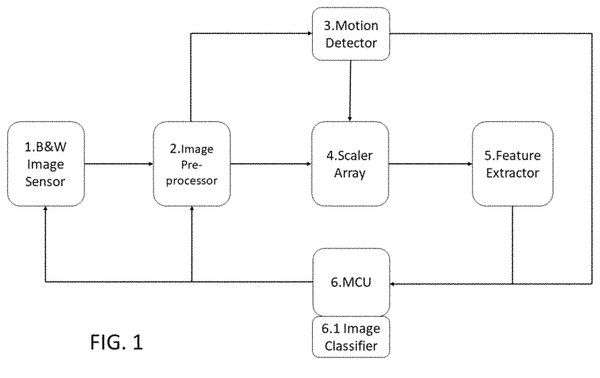Judgment of Inventive Step for AI Invention Patents
Date: 10 January 2025
【Volume 147】
Examination guidelines for computer software-related inventions were amended in 2021, bringing significant changes to the approaches for determining eligibility, clarity, and inventive step. Among these changes, the approach to determining the inventive step of computer software inventions now aligns with the general standard used for invention patents, that is, being evaluated by considering the presence of “factors determining existence of inventive step” and “factors that deny existence of inventive step.” Within the “factors that deny existence of inventive step,” “simple variation” is further categorized into six types, including systematizing the methods of operation performed by humans, applying or modifying based on a common knowledge at the time of application, and such.
Accordingly, given the limited number of court rulings regarding computer software invention patents, particularly those computer inventions with the introduction of Artificial Intelligence (AI), to date since the implementation of the new regulations, how courts will apply the revised examination guidelines to assessment of the inventive step of AI inventions remains to be observed and clarified through future practical developments.
Recently, the Supreme Administrative Court of Taiwan rejected an AI-related invention patent application filed by Neuronbasic Technology Inc., determining that the invention lacked an inventive step. The opinion is worthy of attention.
Case Fact
The previous plaintiff, Raymond Wu, initially filed an invention patent application entitled "Intelligent Recognition Single-Chip System Combined with an Image Sensor" (No. TW108140830, hereinafter referred to as ’830 patent). After examination by the Taiwan Intellectual Property Office (TIPO), the application was rejected in the initial review. Mr. Wu, dissatisfied with the decision, applied for a reexamination and subsequently transferred the application rights to Neuronbasic Technology Inc. (the plaintiff). However, the case was again rejected in the reexamination. The plaintiff, dissatisfied with this decision, filed an administrative appeal, which was also rejected by the Taiwan Ministry of Economic Affairs. As a result, the plaintiff filed an administrative lawsuit with the Taiwan Intellectual Property and Commercial Court.
After deliberation by the Taiwan Intellectual Property and Commercial Court, it was determined that the plaintiff's argument regarding the inventive step of claim 1 of ’830 patent could not be accepted. The court upheld the decision of rejection, rebutting the case (Taiwan Intellectual Property and Commercial Court 2021 Xing Zhuan Su Zi No. 62 Judgment). Although the plaintiff later appealed to the Taiwan Supreme Administrative Court, the appeal was also rejected and rendered final and binding (Taiwan Supreme Administrative Court 2022 Shang Zi No. 877 Judgment).
Major Technical Features of ‘830 patent
The application provides an intelligent identification single-chip system with image sensor. The technical features of Claim 1 include:
An intelligent identification single-chip system with image sensor, comprising a built-in black and white image sensor, an image preprocessor, a motion detector, a scaler array, a feature extractor, and a microprocessor, wherein
a) the black and white image sensor detects an obtained image and transmit it to the image preprocessor;
the image preprocessor cleanups and extends the image it received, and then feeds to the motion detector, and the scaler array respectively,
b) the motion detector divides the image into bins with computing process of motion detect, cache RAM, object locate, compares it against a previous image, and determine a motion existing in a specific bin if the difference from the previous image is over a programmable threshold,
c) the scaler array scales down various areas of interest (AOI) to a smaller size and passing the images with smaller size to the feature extractor,
d) the feature extractor obtains feature vectors, which is arrays of strings of numbers based on certain distinguishing features of an image, for image recognition with the extracted images, and
e) the microprocessor takes the arrays of strings of numbers from the extraction result to organize them into a vector and then to feed them into an image classifier, which outputs an image class that can be compared with a database in a non-volatile memory, and completes an image recognition process.

Schematic Diagram of the Intelligent Recognition Single-Chip System Combined with an Image Sensor in ‘830 patent (FIG. 1)
The main issue in this case: whether Exhibit 1 has disclosed the technical feature of using a "single-chip" as described in Claim 1 of ‘830 patent, and whether Exhibit 2 has disclosed the technical feature that "the scaler array scales down various areas of interest (AOI) to a smaller size and passing the images with smaller size to the feature extractor" as described in Claim 1.
Plaintiff's Argument
- In ‘830 patent, the term "All area of Interest (AOI)" refers to the entire area of the image. Therefore, the technical feature described in Claim 1, "the scaler array scales down various areas of interest (AOI) to a smaller size and passing the images with smaller size to the feature extractor", means that after receiving the image, the scaler array first reduces the size of the entire image and then sends it to the Histogram-Of-Gradients (HOG) feature extractor for feature vector analysis.
In contrast, Exhibit 2 selects a partial region of the image as the region to be recognized (Region of Interest, ROI), and then scales down the ROI area.
Thus, compared to Exhibit 2, which has to conduct comparison for the entire image each time before selecting the ROI for scaling down, the method described in Claim 1 of ‘830 patent can effectively save memory resources, increase recognition processing efficiency, and reduce mass production costs, thereby demonstrating inventiveness. - Furthermore, ‘830 patent integrates multiple units into a very small single-chip in hardware form. By directly controlling the sensor internally, it offers advantages in power saving and improved response efficiency. In contrast, the hardware used in Exhibit 1 is based on a system unit operating on an analog circuit of a Field Programmable Gate Array (FPGA), which is significantly different from ‘830 patent, which emphasize a system operating on a single chip.
Thus, the processing efficiency of ‘830 patent is far greater than that of Exhibit 1. Moreover, the technology of integrating multiple system units into a very small single-chip cannot be easily achieved by a person ordinarily skilled in the art. The analysis of decomposing its individual units during examination and appeal is not a correct interpretation.
[Court's Opinion] Ruling that Claim 1 of ‘830 patent lacks inventiveness.
1. Explanation of the "’All’ area of Interest (AOI)" in ‘830 patent
In the machine vision image processing, a specific region with arbitrary shape of the image that needs to be processed is selected from the image to be processed, and this is called the Area of Interest (AOI) or "region of interest (ROI)". This definition can be found in the machine vision concept webpage referenced by the defendant, and the AOI is also described as "areas of interest" in the specification of the US patent application US10,839,242B1 filed by the plaintiff. These show that the term AOI does not refer to the entire area.
2. Exhibit 2 has disclosed the technical feature of "scaling down various areas of interest (AOI) to a smaller size” of ‘830 patent
Figures (a)-(e) in pages 5 and 6, Exhibit 2 discloses the selection of areas of interest (AOI) from an image. Page 7 describes that "the size of the region of interest (ROI) is not fixed... and all the recognition blocks must be normalized to the same recognition window size." Figure 3.2 on page 7 shows the normalization process followed by HOG feature extraction.
As described above, Claim 1 of ‘830 patent should involve extracting a region with a specific size from the full image as the AOI, rather than being limited to scaling down the entire image first before extracting feature vectors, as the plaintiff argued. The plaintiff has also failed to provide any supporting evidence to demonstrate that the AOI in fact refers to the entire image. Therefore, Exhibit 2 has disclosed the technical feature of Claim 1 of ‘830 patent.
3. The technical feature of “single-chip” of ‘830 patent lacks inventiveness
Furthermore, although the plaintiff argues that the FPGA analog circuit used in Exhibit 1 is different from the “multiple units (operating) in a single chip” claimed in ‘830 patent, this concept of a circuit system composed of multiple different units integrated into a single chip using integrated circuit technology has long been proposed as a new trend in chip design in both academia and industry, and is considered common knowledge by those skilled in the art.
Moreover, the full text of specification of ‘830 patent does not describe any related technical content nor features regarding the integration of system architecture into a single chip, nor does it explain how the structure of Claim 1 contributes to overcoming the challenges of single-chip integration. Therefore, Claim 1 merely describes a concept of integrating the system architecture into a single chip, making it difficult to be well-grounded.
Wisdom Analysis
- Regarding the explanation of "Area of Interest (AOI)"
The main issue in this case surrounds the interpretation of the "Area of Interest (AOI)" in the claims of ‘830 patent. According to Taiwan's patent laws and court opinions, "To interpret the scope of a patent claim, both internal and external evidence may be considered. Internal evidence refers to the content of the claims, the patent specification, drawings, and the application history. External evidence refers to evidence other than internal evidence, such as the inventor’s other papers and patents, relevant prior cases, expert witness opinions, perspectives from individuals ordinarily skilled in the art, authoritative works, dictionaries, professional glossaries, reference books, textbooks, etc. Internal evidence will be prioritized in application of evidence." (referring to the Taiwan Supreme Administrative Court 2021 Shang Zi No. 762 Judgment)
As stated above, since the internal evidence, including the specification, claims, drawings of ‘830 patent, and even the corresponding U.S. application, does not provide any definition of AOI, and the defendant has also pointed out that external evidence clearly defines AOI as the "selected area of interest," the plaintiff's interpretation of AOI as "all area of interest" is unfounded.
- The "simple variation" aspects of inventive step in computer software inventions
In Taiwan’s Patent Examination Guidelines, “simple variation” is one of the factors that deny existence of inventive step. Further in Chapter 12, Computer Software Related Inventions, “simple variation” is further categorized into “conversion between technical fields, “systematization of the methods of operation performed by humans,” “software achieving the functions of prior hardware technology,” “recreating a common knowledge at the time of filing in a computer-generated virtual space,” “application or modification based on a common knowledge at the time of filing,” and “features that pose no contributions to technical effect” (Section 4.2.2.1.2, Chapter 12 Computer Software Related Inventions, Part II of Patent Examination Guidelines).
Among these, “application or modification based on a common knowledge at the time of filing” refers to adjustments or modifications made to a computer program or system by a person ordinarily skilled in the art based on common knowledge at the time of application to meet practical needs.
Accordingly, the following will further address whether the aforementioned issues in this case fall into any category of factors that deny the existence of inventive step.
- Inventiveness of “scaling down various areas of interest (AOI) to a smaller size” in ‘830 patent
Even though the plaintiff argues that the invention first reduces the entire image in size before performing feature extraction, the patent specification does not provide any details regarding the specific technical means of this feature or the extent to which it improves computational efficiency. It seems that this is simply a substitution of “selected portions of the image” in the prior art with “the entire image,” which falls under the category of “application or modification based on a common knowledge at the time of filing.” Therefore, it is difficult to determine whether this technical feature truly offers an advantage in computational efficiency that meets the threshold for inventiveness.
- Inventiveness of "single chip" in ‘830 patent
Furthermore, while the plaintiff argues that the application is the first one to combine an image sensor with an artificial intelligence chip, and that each single-chip design comes with its own technical challenges so that it cannot be completed by common knowledge, the specification of the application itself does not include any technical features related to single-chip integration. It does not disclose the specific technical means by which the single-chip design is achieved, nor does it explain what problems or difficulties in single-chip technology it overcomes, or demonstrate any technical challenges that go beyond common knowledge. Therefore, the court concluded that the single-chip system of the case should be regarded as merely an "application or modification based on a common knowledge at the time of filing," and it cannot be used to prove the inventive step of claim 1.






